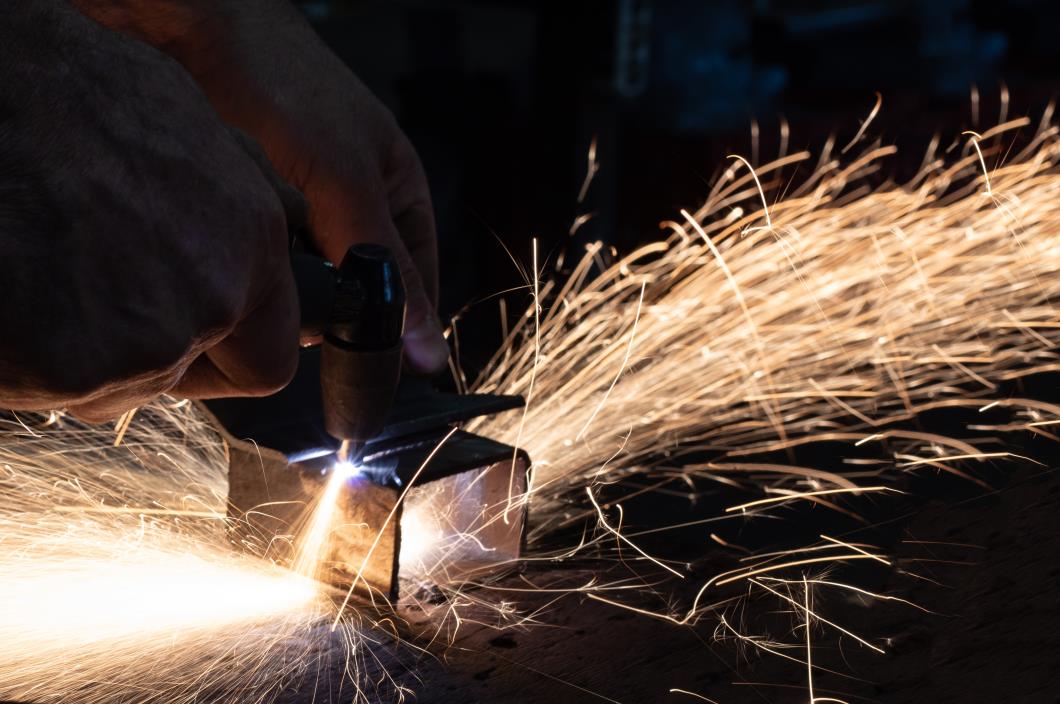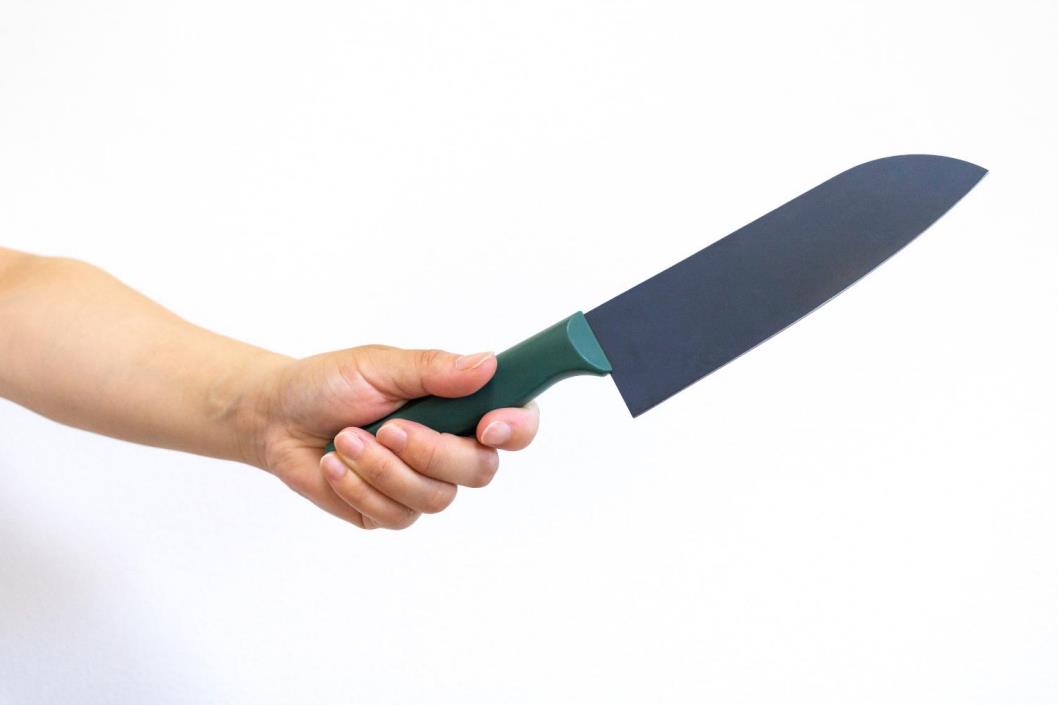An intrinsic facet of understanding knives, their quality, and how they work is understanding the steel used in their manufacture. In this article we’re going to explain S90V steel and its value to YOU as a knife user.
More fully known as CPM S90V steel, this knife steel developed by American firm Crucible Industries in the 1990s is a martensitic stainless steel. It’s got a relatively high chromium and vanadium carbide content, which improves the functional quality of the tool made from it.
The acronym CPM means Crucible Particle Metallurgy and it’s simply the process of making the steel at a higher alloy grade than normal tool steels. S90V is regarded by steel experts as being in the category of ‘super steels’, which means that it has one or more of the following qualities:
- (Relatively) new to the market
- Is stainless
- Presents some sharpening difficulties
- Holds an excellent edge over time
The term martensitic refers to the alloy (mixed elements) steel’s crystalline structure and just means that the steel can be tempered and hardened by different types of treatment including heat treatments.
A martensitic stainless steel will usually contain 11% to 18% chromium along with other elements that give the steel durability, hardness, and corrosion resistance. These are all desired qualities for your kitchen knife!
Table of contents
The composition of S90V steel

CPM S90V steel was originally named CPM 420V by Crucible Industries, and its original patent giving all technical specs is linked here for the techies!
For the purposes of this article and keeping things easier to understand, let’s look at the main component elements of S90V stainless steel and see what they add to the steel, and thus, to your kitchen knife.
| Chromium | S90V steel is 14% chromium. Chromium is a chemical element that gives your knife blade good corrosion resistance and hardness. |
| Vanadium | S90V steel has a 9% vanadium content. Vanadium is a chemical element and a malleable transition metal and the vanadium carbides in S90V make it harder and add to edge retention because it is abrasion resistant. |
| Carbon | 2.3% of S90V steel is carbon. The carbon adds hardness and wear resistance to the steel. Carbon is added only in small amounts in the best steels because a lot of it can make steel brittle. |
| Molybdenum | This tongue twisting chemical element makes up 1% of S90V and makes the steel easier to work and shape during the manufacturing process. Molybdenum also adds strength to the steel alloy. |
| Manganese | S90V contains 0.5% manganese which is a chemical element included in the alloy to increase hardenability. Like carbon, it can only be present in small amounts, or it can make metals brittle. |
| Silicon | Not to be confused with silicone, silicon the chemical element is in S90V at a percentage of 0.5% and it’s there to add toughness to the steel. |
| Tungsten | S90V has a 0.4% tungsten content. Tungsten is a chemical element and refractory metal that makes your knife harder and stronger against wear. |
| Phosphorus | S90V has a 0.03% phosphorus content which gives the knife steel strength. |
| Sulfur | 0.03% of S90V steel is sulfur. The Sulfur increases the machineability of the steel alloy, making it easier to work with. |
The primary components of S90V are chromium, vanadium, and carbon. These elements in relatively high amounts are what makes S90V a premium level stainless steel, highly regarded for its performance when compared to other knife steels.
The key properties of S90V steel

Let’s take an in depth look at what makes S90V steel a good choice for the knife buyer by breaking it down into core categories that will determine knife performance.
Edge retention
Amongst knife enthusiasts S90V knives lead the field for edge retention, they’re about as good as you can get for a kitchen knife in terms of holding a sharp edge over time.
Hardness
The hardness of materials is often rated on the Rockwell Hardness Scale and S90V stainless steel scores a high of 58/59 here. This is very hard for a knife steel and will give a lot of strength and durability for your at home kitchen knives.
Corrosion resistance
Rust is something that no knife owner wants on their knives and in terms of corrosion resistance S90V steel is resistant to corrosion because it’s a stainless steel (more than 10% chromium).
Wear resistance
S90V steel is very resistant to wear, knocks and bumps due in part to its high vanadium content. Amongst knife collectors and makers S90V is regarded as an industry leader for wear resistance, it’s at the very top if not the best available.
Although this means that S90V knives are pricey, you can rest assured that you’re getting a long – lasting product that’s almost indestructible for daily usage.
Sharpness
An S90V knife blade stays incredibly sharp over time simply because the blade is so resistant to wearing down and developing rough spots. Once a fine edge is honed on the blade, it’ll be there for a very long time.
Toughness
When rated for toughness, S90V does better than competitors like M390, ZDP189 and S110V steels. Although is has an element of brittleness like other hard steels, the specialized Powder Metallurgy process of making S90V ensures an even distribution of fine carbides in the alloy, giving it superior toughness comparatively speaking.
Ease of sharpening
S90V stainless steel is very difficult to sharpen. This is because it’s simply a very wear resistant steel. Knife experts recommend sharpening S90V knives with diamond grit sharpeners, using a Spyderco Sharpmaker or sending them to the manufacturer for sharpening.
The other side of this is, your S90V knife if cared for, stored and used appropriately will hardly ever need sharpening, it’s built to hold an edge for a long time without sharpening regularly.
How does S90V perform as a kitchen knife material?

As far as kitchen usage and food prep go, users report that an S90V stainless steel knife is well worth the investment.
If it’s stored properly and dried thoroughly after every use, the S90V range of knives offer very long – lasting performance.
As a ‘super steel’ knife, S90V lives up to the marketing. Besides the finicky sharpening needed (and this is rarely needed), knives made from S90V offer top of the range durability and performance in the kitchen with users reporting an impressive resistance to blade chipping and blunting. These knives hold an edge with almost supernatural ability and are worthy of their reputation in the knife industry.
Some comparisons – how S90V ranks against competing steels
S90V vs S30V steel
For edge retention over time, the S90V steel knives are clear winners here. For ease of sharpening, the S30V wins. With a Rockwell hardness scale rating of 58 – 61, both steels are so close in hardness that depending on the heat treatment of the steel they could be called equivalent.
S90V vs M390 steel
The S90V steel knife will hold an edge better than the M390 steel knife but this isn’t a put down, the S90V has exceptional edge retention.
Both knife steel have inherent brittleness which is par for the course with hard steel but the Rockwell hardness rating of 60 – 62 for M390 steel makes it slightly harder than S90V.
In terms of sharpening/machineability the M390 is far easier to work with.
M390 wins as far as corrosion resistance goes but the differences between the two steels are so slight that many knife experts would be hard pressed to pick a ‘better’ steel between the two.
In conclusion
S90V as a super steel is a leader amongst the super steels on offer today and can hold an edge on your kitchen knives like nobody’s business!
When compared with other steels of similar composition it’s of a very high standard for those willing to pay more for excellent quality and durability.
With good performance across various spec areas and very little sharpening needed, S90V knife steel offers low maintenance usability for the busy cook or outdoor enthusiast.
Do join us again on the blog as we explore knife technique, different knife steels and so much more!









